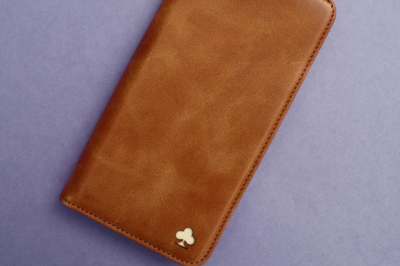Crafting Elegance: The Journey from Hide to Premium Leather iPhone Cases
In a world filled with gadgets, the accessories we choose show off our style. Leather has always been a favourite because it combines beauty and durability. But what’s the story behind those premium leather iPhone cases that many of us admire?
Follow along as we show you the process of making high-quality leather goods, starting with rawhide. We'll take a look at the whole leatherworking process, from finding the right hides to tanning them and adding the finishing touches that make each case special.
Curious to learn more? Let's explore how nature, skill, and design come together to create leather cases you’ll love and rely on!
Selecting the Right Hide
The foundation of a high-quality leather iPhone case starts with choosing the right hide. Different types of hides and leather grades determine the final product’s texture, quality, durability and it’s ability to resist water.
Types of Leather Grades
Full-Grain Leather
Full-grain leather, such as Italian cowhide, is the highest grade, taken from the top layer of the hide with all of its natural grain intact. It is known for giving cases a natural, rugged look as it develops a beautiful patina over time. Also, full-grain leather is not fully waterproof therefore, to help it withstand the harsh elements and prolong its lifespan regular conditioning is required.
Top-Grain Leather
This one is slightly lower in quality than full-grain leather because the outer layer is sanded to remove imperfections. Due to the sanding process and surface treatments, it is more water-resistant than full-grain leather.
Genuine Leather
Genuine leather is produced from the lower layers of the hide after the top layers have been removed. Although it is more affordable, it lacks the durability and ageing qualities of full-grain or top-grain leather.
Bonded Leather
Bonded leather is made from leather scraps and fibres glued together to create a leather-like material. It has minimal durability and water resistance, often used for inexpensive items that prioritise appearance over quality.
Tanning Process
Once the hide is selected, the next step is the tanning process, which turns raw hide into durable leather. Two primary tanning methods are used in leather production:
Vegetable Tanning
It is a traditional method that uses natural tannins from plant sources like tree bark and leaves. The raw hides are cleaned and soaked in tannin-rich baths for several weeks, allowing them to absorb the tannins and become thicker and firmer.
Once the tanning process is complete, the leather is rinsed, dried, and treated with oils or waxes. The result is durable, earthy-toned leather that develops a beautiful patina over time.
Chrome Tanning
Chrome tanning is a modern and efficient method that uses chromium salts to produce soft, flexible leather in just 24 to 48 hours. The process begins by cleaning the hides and soaking them in an acidic solution.
Next, the hides are placed in drums filled with chromium salts, turning them into a distinctive pale blue known as "wet blue." This quick chemical reaction makes the leather lightweight and resilient, allowing it to be dyed in vibrant colours.
After tanning, the leather is dried and treated with oils to maintain its suppleness and water resistance.
Cutting and Shaping the Leather
Once the leather has been tanned, it is ready to be cut and shaped into the components of the iPhone case. Shaping the leather requires skill and technique, as the leather must be carefully moulded to wrap securely around the phone while remaining functional and elegant. Artisans often use advanced tools, such as laser cutters, to achieve flawless precision around the phone without being too tight or loose.
Stitching and Assembly
When crafting a leather case for an iPhone, it’s essential to choose the right type of thread for stitching. Among all options, polyester and nylon threads are preferred due to their strength and resistance to wear & tear. There are two primary stitching methods used in crafting these iPhone cases:
Hand-stitching
Hand-stitching is performed by skilled artisans who carefully sew each stitch by hand. This method ensures superior strength, as each stitch is tightened with accuracy, which results in enhancing case uniqueness with its visible patterns.
Machine Stitching
It is faster and produces uniform stitches that create a sleek, clean appearance. While it may lack the artisanal touch of hand-stitching, still this stitching is ideal for those who prefer a modern and minimalistic design.
During the assembly process, additional components, such as microfiber linings, are added inside the case. These linings protect the phone from scratches and provide a soft, cushioned surface for the phone to rest on.
Finishing Touches
After stitching and assembly, the case undergoes several finishing steps to ensure that it looks elegant and feels comfortable in the hand.
- Polishing: The leather is polished to achieve a smooth, shiny, luxurious surface.
- Conditioning: Moisturizers are applied to keep the leather soft and prevent it from cracking over time.
- Edge Finishing: To prevent fraying and increase durability, the edges of the leather are sealed with special coatings.
Wrapping Up
As you weigh your options for protecting your device, consider the long-term advantages of a premium leather case. If you’re deciding between leather vs clear cases, leather is the smarter choice. It offers a perfect mix of style, durability, and protection, with added benefits like shock absorption and eco-friendly production methods.
Now that you know the journey behind these exquisite cases, explore our premium leather phone cases and treat your phone to the luxury it deserves.











